
Trumpocalypse: Restoring American Democracy
by
David Frum
Published 25 May 2020
Tom Miles, “China Overtakes U.S. for Healthy Lifespan: WHO Data,” Reuters, March 30, 2018, https://www.reuters.com/article/us-health-lifespan/china-overtakes-u-s-for-healthy-lifespan-who-data-idUSKCN1IV15L. 5. Anna Wilde Mathews, “Cost of Employer-Provided Health Coverage Passes $20,000 a Year,” Wall Street Journal, September 25, 2019, https://www.wsj.com/articles/cost-of-employer-provided-health-coverage-passes-20-000-a-year-11569429000. 6. Organization for Economic Cooperation and Development, “Self-Employment Rate,” September 18, 2019, accessed November 12, 2019, https://data.oecd.org/emp/self-employment-rate.htm. 7.
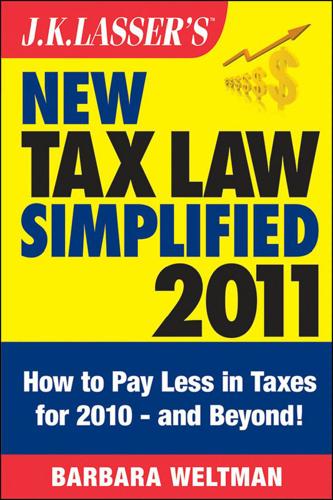
J.K. Lasser's New Tax Law Simplified: Tax Relief From the HIRE Act, Health Care Reform, and More
by
Barbara Weltman
Published 30 Nov 2010
Health Insurance Premium Assistance Credit Starting in 2014, if you purchase your own coverage and your income is below set limits, you can qualify for a federal tax credit to help you cover the cost of health insurance. The health insurance premium assistance credit is supposed to ensure that you pay no more than a certain percentage of your income to carry health coverage. The credit ranges from 100 percent to 400 percent of the federal poverty level. Anyone with employer-provided health coverage cannot claim the credit unless the health coverage is below certain coverage standards or an employee’s share of premium costs exceeds 9.5 percent of the employee’s income. The credit is refundable, which means you get a tax refund if the credit exceeds your tax bill for the year. Coverage for Children under Age 27 In the past, employers and insurers limited coverage for employees’ dependents to children still in school and/or under the age of 23 or so.
…
Starting in 2011, the W-2 form will have to include the value of health coverage, whether such cost is paid by the employer, the employee, or both. Work with your insurer to determine this amount. 147 P1: OTA/XYZ P2: ABC c07 JWBT413/Weltman 148 October 14, 2010 15:18 Printer Name: Yet to Come TAX-SAVING CHANGES FOR THE SELF-EMPLOYED In 2013 and later years, employers who provide health coverage will have to report this to the IRS. The way in which this will be done has yet to be determined. Also in 2013, employers will have to withhold the additional Medicare tax on employees earning more than $200,000. However, for their married employers, they are not required to ask about spousal earnings (which ultimately impact the employee’s additional Medicare tax).

The Unbanking of America: How the New Middle Class Survives
by
Lisa Servon
Published 10 Jan 2017
The mock budget provided to these workers revealed remarkable insensitivity to the reality of their lives: it presumed that workers would hold two jobs, that health insurance would cost them twenty dollars per month, and that their monthly rent or mortgage payment would be about six hundred dollars. The budget entirely failed to factor in childcare, groceries, clothing, or gas. Many who managed to hold on to their jobs in the wake of the 2008 financial crisis found that several employers had peeled back benefits. As job security declined, “fewer employers provided health coverage, and employers shifted away from offering guaranteed pensions or any retirement plan at all.” This occurred after the government had already rolled back public benefits, hitting many families hard. Teresa has two children and understands what a drop in benefits can mean. Her first child is ten years old, and the entire first pregnancy cost her thirty dollars out of pocket; her insurance covered the rest.
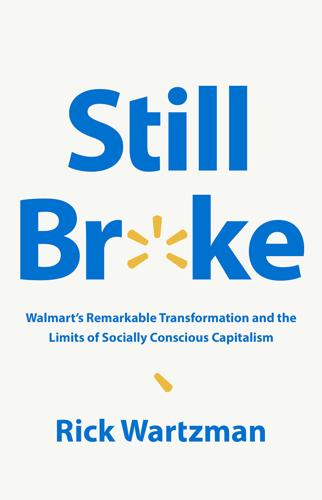
Still Broke: Walmart's Remarkable Transformation and the Limits of Socially Conscious Capitalism
by
Rick Wartzman
Published 15 Nov 2022
In ways big and small, they have my back—one of many reasons the institute is the perfect perch from which to write. I am grateful to them all. As I puzzled out my conclusions, Miguel Padro of the Aspen Institute Business and Society Program was an invaluable sounding board. Gary Claxton of KFF, one of the nation’s leading experts on employer-provided health coverage, shared his expertise. And Michael Schultz of NORC and Molly Kinder of the Brookings Institution made me wrestle harder with what it would take to institute a living wage in this country. Writing is a solitary business, but my friends make it feel less lonely. Asking with genuine curiosity, “How’s the book going?”

The End of Medicine: How Silicon Valley (And Naked Mice) Will Reboot Your Doctor
by
Andy Kessler
Published 12 Oct 2009
Who wouldn’t pay a king’s ransom for a doctor’s healing powers? It’s those damn insurance companies, right? The mess inflicted on health care is well documented. Wage controls innocently put in place during World War II forced employers to come up with something to attract workers. Employer-provided health coverage became the norm. As untaxed compensation, it had the indirect approval of the U.S. government. Then that whole LBJ Medicare thing. If you were eligible for Social Security, we’d pay your retirement and, what the heck, we’d pay your medical bills, too. Great Society indeed. Back then it was considered compassionate to pay for the elder-lies’ health care needs.
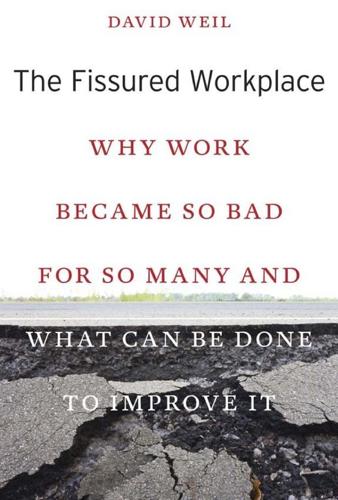
The Fissured Workplace
by
David Weil
Published 17 Feb 2014
Of those workers who have them, the vast majority now have defined contribution plans that shift the risk of retirement income onto the worker.7 • Among low-wage workers, the U.S. Bureau of Labor Statistics in its 2007 National Compensation Survey reported that only 24% in the bottom quintile of the wage distribution had employer-provided health coverage, compared to 62% of workers in the middle-wage quintile.8 • In 2012 the U.S. Department of Labor recovered a record level of back wages from employers—representing the difference between wages workers received and what the law says their employers are responsible for paying. Many of the industries where researchers in recent years have found high rates of violations of basic labor standards and worsening employment conditions coincide with industries where fissuring is most advanced.
…
For example, wages and salaries for service workers account for 71% and legally required benefits account for 9.3% of employer hourly costs because employees in service industries typically receive far lower insurance and retirement benefits than workers in other industries. 3. In making more employers responsible for providing health care coverage to their workforce, the Affordable Care Act of 2010 changes these dynamics both for lead and subordinate businesses in complicated ways. For example, the costs of providing health care benefits may be lower per worker for a larger versus a smaller business. If subordinate businesses are now required to provide coverage, their costs of providing services to lead businesses will increase, thereby changing the private calculus of hiring additional workers versus using a subcontractor or temporary agency to provide them.
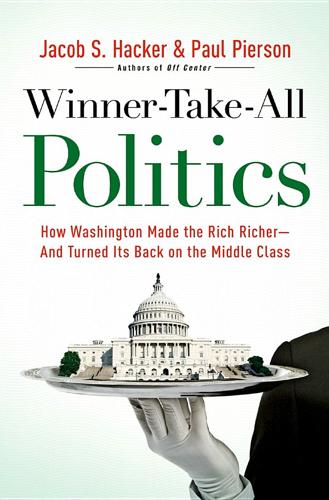
Winner-Take-All Politics: How Washington Made the Rich Richer-And Turned Its Back on the Middle Class
by
Paul Pierson
and
Jacob S. Hacker
Published 14 Sep 2010
Median Annual Earnings of Full-Time, Full-Year Wage and Salary Workers Ages 25–34, by Educational Attainment, Sex, and Race/Ethnicity: Selected Years, 1980–2006,” U.S. Department of Education, Institute of Education Sciences, http://nces.ed.gov/programs/coe/2008/section2/table.asp?tableID=894. 37 Liana Fox and Elise Gould, “Employer-Provided Health Coverage Declining for College Grads in Entry-Level Jobs,” Economic Snapshots, Economic Policy Institute (July 18, 2007), http://www.epi.org/economic_snapshots/entry/webfeatures_snapshots_20070718/. 38 Leslie McCall, “Expanding Levels of Within-Group Wage Inequality in U.S. Labor Markets,” Demography 37, no. 4 (2000): 415–30; Thomas Lemieux, “Increasing Residual Wage Inequality: Composition Effects, Noisy Data, or Rising Demand for Skill?”

The Second Machine Age: Work, Progress, and Prosperity in a Time of Brilliant Technologies
by
Erik Brynjolfsson
and
Andrew McAfee
Published 20 Jan 2014
As digital technologies keep acquiring new skills and capabilities, these same organizations will increasingly have another option: they’ll be able to make use of digital laborers rather than humans. The more expensive human labor is, the more readily employers will switch over to machines. And since payroll taxes make human labor more expensive, they’ll very likely have the effect of hastening this switch. Mandates like employer-provided health care coverage have the same effect; they too appear as a tax on human labor and so discourages it, all other things being equal.21 We bring up these points not because we dislike Social Security or health care coverage. We like both of them a great deal and want them to continue. We simply point out that these and other popular programs are financed, in whole or in part, by taxes on labor.

How to Retire the Cheapskate Way
by
Jeff Yeager
Published 1 Jan 2013
Of course, employers haven’t always paid such astronomical amounts for their employee health plans. The skyrocketing cost of health care in the United States is the reason why many employers are now dropping their plans for employees altogether or are now requiring employees to bear a larger and larger burden of the costs themselves. And employers who continue to provide gratis (or even subsidized) health-care coverage to employees after they retire—a practice that in generations past was very common—are now about as rare as a proctologist who also practices dentistry. So, for the first eighteen months after leaving my former position (i.e., the period when we were entitled to continue coverage under COBRA, at our own expense), we were spending about $16,000 per year in premiums, deductibles, co-pays, and medical costs not covered by insurance, and that was just for the two of us.

Personal Investing: The Missing Manual
by
Bonnie Biafore
,
Amy E. Buttell
and
Carol Fabbri
Published 24 May 2010

Framing Class: Media Representations of Wealth and Poverty in America
by
Diana Elizabeth Kendall
Published 27 Jul 2005
The newspaper account of the rise in the poverty rate is an example of a thematically framed article that views the poor primarily as statistics rather than real people: In the recession, the nation’s poverty rate climbed to 13.2 percent last year, up from 12.5 percent in 2007, according to an annual report released Thursday by the Census Bureau. The report also documented a decline in employer-provided health insurance and in coverage for adults. The rise in the poverty rate, to the highest level since 1997, portends even larger increases this year, which has registered far higher unemployment than in 2008, economists said. The bureau said that 39.8 million residents last year lived below the poverty line, defined as an income of $22,025 for a family of four.41 On television, a story like this may be accompanied by video footage of a poor Latino or African American man shuffling despondently down a city street.
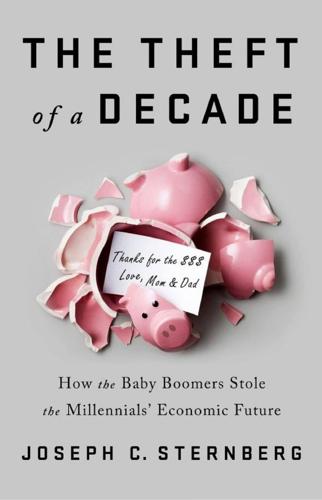
The Theft of a Decade: How the Baby Boomers Stole the Millennials' Economic Future
by
Joseph C. Sternberg
Published 13 May 2019
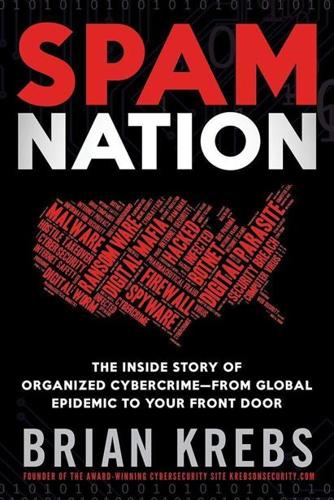
Spam Nation: The Inside Story of Organized Cybercrime-From Global Epidemic to Your Front Door
by
Brian Krebs
Published 18 Nov 2014

J.K. Lasser's Your Income Tax
by
J K Lasser Institute
Published 30 Oct 2012
Graduate students who are teaching or research assistants are not taxed on tuition reduction unless the reduction is compensation for teaching services (3.7). Working condition benefits Benefits provided by your employer that would be deductible if you paid the expenses yourself are a tax-free working condition fringe benefit. These include business use of a company car or employer-provided cell phone (3.9). 3.1 Tax-Free Health and Accident Coverage Under Employer Plans You are not taxed on contributions or insurance premiums your employer makes to a health, hospitalization, or accident plan to cover you, your spouse, your dependents, and your children under age 27 whether or not they can be claimed as your dependents.
…
If you retire and have the option of receiving continued coverage under the medical plan or a lump-sum payment covering unused accumulated sick leave instead of coverage, the lump-sum amount is reported as income at the time you have the option to receive it. If you elect continued coverage, the amount reported as income may be deductible as medical insurance if you itemize deductions (17.5). If your employer provides health and accident coverage to your live-in companion who is not recognized as your “spouse” under state law or as your “dependent” (even if support and household membership tests in Chapter 21 are met) because the relationship violates local law, you are taxed on the value of the coverage in excess of what you paid (on an after-tax basis) for it.
…
Generally, an unmarried person who maintains a household for dependents and is allowed to compute his or her tax based on head of household rates, which are more favorable than single person rates; see 1.12. Health reimbursement arrangement (HRA). Employer established account that provides tax-free reimbursements to employees for deductibles and other expenses that could be taken as itemized deductions; see 3.3. Health savings account. For calendar year 2012, taxpayers covered by an HDHP may contribute up to $3,100 ($6,250 for family coverage) plus $1,000 extra if age 55 or older; see 3.2 and 41.11. High deductible health plan (HDHP). For 2012, a high deductible health plan is a health plan with an annual deductible that is not less than $1,200 for self-only coverage or $2,400 for family coverage, and with annual out-of-pocket expenses that do not exceed $6,050 or $12,100, respectively.

The Story of Stuff: The Impact of Overconsumption on the Planet, Our Communities, and Our Health-And How We Can Make It Better
by
Annie Leonard
Published 22 Feb 2011
By contrast, in 2007 Wal-Mart’s CEO, Lee Scott, earned $29.7 million, or 1,550 times the annual income of an average full-time Wal-Mart associate.75 Watchdog groups report that stores are regularly understaffed to save the corporation even more money, and managers have been caught secretly deleting hours, especially overtime, from time cards.76 Employees are paid so little that most can’t afford the company health care program, resulting in about half of Wal-Mart’s 1.4 million U.S. employees not being covered by the plan.77 Often workers are outright encouraged by Wal-Mart management to get federal assistance like Medicaid, food stamps, and subsidized housing. In fact, according to the Washington, D.C., based organization Good Jobs First, in the twenty-one out of twenty-three states for which data is available, Wal-Mart forces more employees to rely on taxpayer-funded health care than any other employer.78 So instead of Wal-Mart providing many employees with health care coverage, the American taxpayer does. Nor does taxpayer support of the company end there. We unwitting taxpayers have heavily subsidized Wal-Mart’s success. Good Jobs First maintains a project called Wal-Mart Subsidy Watch that tracks and exposes how U.S. taxpayer money supports Wal-Mart’s operations, like the “more than $1.2 billion in tax breaks, free land, infrastructure assistance, low-cost financing and outright grants from state and local governments around the country.”79 And just try to put a dollar value on the social fabric of a community, which Wal-Mart megastores have repeatedly undermined.

Arguing With Zombies: Economics, Politics, and the Fight for a Better Future
by
Paul Krugman
Published 28 Jan 2020
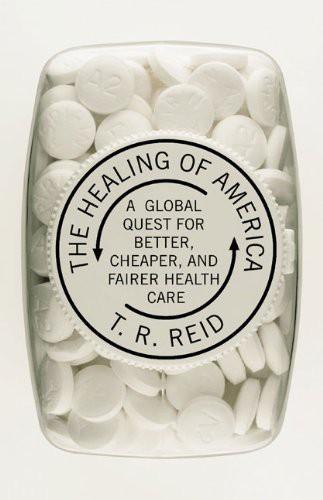
The Healing of America: A Global Quest for Better, Cheaper, and Fairer Health Care
by
T. R. Reid
Published 15 Aug 2009

Big Business: A Love Letter to an American Anti-Hero
by
Tyler Cowen
Published 8 Apr 2019
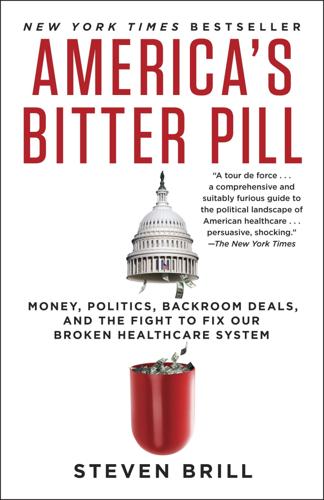
America's Bitter Pill: Money, Politics, Backroom Deals, and the Fight to Fix Our Broken Healthcare System
by
Steven Brill
Published 5 Jan 2015
Within days, an analyst from Wall Street’s Bernstein Research reported that “as we previously anticipated, the medical [device] industry tax was reduced,” because of the industry’s lobbying efforts. “The impact of the reduced tax looks manageable to us,” the analyst concluded, “especially when offset by the benefits of expanded coverage.” Blanche Lincoln of Arkansas wanted a change that would ease the penalty on employers who did not provide health insurance by allowing them to delay coverage for three months for new employees after a one-month orientation period. (Walmart, among other home-state businesses, was concerned.) Lincoln got it. But she gave up her opposition to a tax on tanning bed services, even though many of the beds were made in her state, because Reid wanted to placate the lobbyists for the dermatologists, the drug companies that sold Botox, and the plastic surgeons.
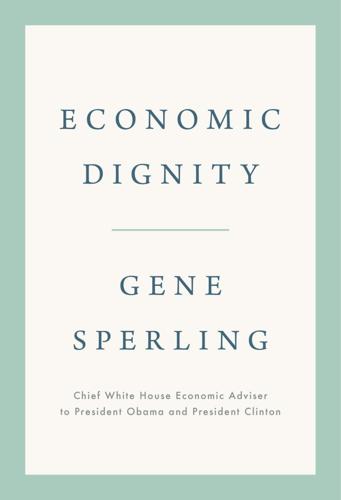
Economic Dignity
by
Gene Sperling
Published 14 Sep 2020
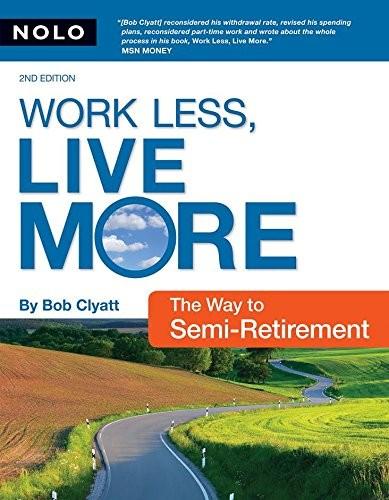
Work Less, Live More: The Way to Semi-Retirement
by
Robert Clyatt
Published 28 Sep 2007

The Sharing Economy: The End of Employment and the Rise of Crowd-Based Capitalism
by
Arun Sundararajan
Published 12 May 2016

J.K. Lasser's Your Income Tax 2022: For Preparing Your 2021 Tax Return
by
J. K. Lasser Institute
Published 21 Dec 2021
H Head of household Generally, an unmarried person who maintains a household for dependents and is allowed to compute his or her tax based on head of household rates, which are more favorable than single person rates; see 1.12. Health reimbursement arrangement (HRA) An employer-established account that provides tax-free reimbursements to employees for deductibles and other medical expenses that could be taken as itemized deductions; see 3.3. Health savings account For calendar year 2021, taxpayers covered by an HDHP may contribute up to $3,600 ($7,200 for family coverage) plus $1,000 extra if age 55 or older and not enrolled in Medicare; see 3.2 and 41.11. High deductible health plan (HDHP) For 2021, a high deductible health plan is a health plan with an annual deductible that is not less than $1,400 for self-only coverage or $2,800 for family coverage, and with annual out-of-pocket expenses that do not exceed $7,000 or $14,000, respectively.
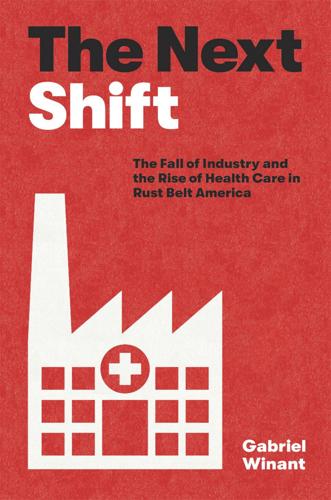
The Next Shift: The Fall of Industry and the Rise of Health Care in Rust Belt America
by
Gabriel Winant
Published 23 Mar 2021

The Trouble With Billionaires
by
Linda McQuaig
Published 1 May 2013

The No Need to Diet Book: Become a Diet Rebel and Make Friends With Food
by
Plantbased Pixie
Published 7 Mar 2019

Going Solo: The Extraordinary Rise and Surprising Appeal of Living Alone
by
Eric Klinenberg
Published 1 Jan 2012

Ghost Work: How to Stop Silicon Valley From Building a New Global Underclass
by
Mary L. Gray
and
Siddharth Suri
Published 6 May 2019

The Raging 2020s: Companies, Countries, People - and the Fight for Our Future
by
Alec Ross
Published 13 Sep 2021

J.K. Lasser's Your Income Tax 2014
by
J. K. Lasser
Published 5 Oct 2013
Graduate students who are teaching or research assistants are not taxed on tuition reduction unless the reduction is compensation for teaching services (3.7). Working condition benefits Benefits provided by your employer that would be deductible if you paid the expenses yourself are a tax-free working condition fringe benefit. These include business use of a company car or employer-provided cell phone (3.9). 3.1 Tax-Free Health and Accident Coverage Under Employer Plans You are not taxed on contributions or insurance premiums your employer makes to a health, hospitalization, or accident plan to cover you, your spouse, your dependents, and your children under age 27 whether or not they can be claimed as your dependents.
…
Generally, an unmarried person who maintains a household for dependents and is allowed to compute his or her tax based on head of household rates, which are more favorable than single person rates; see 1.12. Health reimbursement arrangement (HRA). Employer established account that provides tax-free reimbursements to employees for deductibles and other expenses that could be taken as itemized deductions; see 3.3. Health savings account. For calendar year 2012, taxpayers covered by an HDHP may contribute up to $3,100 ($6,250 for family coverage) plus $1,000 extra if age 55 or older; see 3.2 and 41.11. High deductible health plan (HDHP). For 2012, a high deductible health plan is a health plan with an annual deductible that is not less than $1,200 for self-only coverage or $2,400 for family coverage, and with annual out-of-pocket expenses that do not exceed $6,050 or $12,100, respectively.

J.K. Lasser's Your Income Tax 2016: For Preparing Your 2015 Tax Return
by
J. K. Lasser Institute
Published 19 Oct 2015
Graduate students who are teaching or research assistants are not taxed on tuition reduction unless the reduction is compensation for teaching services (3.7). Working condition benefits Benefits provided by your employer that would be deductible if you paid the expenses yourself are a tax-free working condition fringe benefit. These include business use of a company car or employer-provided cell phone (3.9). 3.1Tax-Free Health and Accident Coverage Under Employer Plans You are not taxed on contributions or insurance premiums your employer makes to a health, hospitalization, or accident plan to cover you, your spouse, your dependents, and your children under age 27 whether or not they can be claimed as your dependents.
…
Generally, an unmarried person who maintains a household for dependents and is allowed to compute his or her tax based on head of household rates, which are more favorable than single person rates; see 1.12. Health reimbursement arrangement (HRA). Employer established account that provides tax-free reimbursements to employees for deductibles and other expenses that could be taken as itemized deductions; see 3.3. Health savings account. For calendar year 2015, taxpayers covered by an HDHP may contribute up to $3,350 ($6,650 for family coverage) plus $1,000 extra if age 55 or older; see 3.2 and 41.11. High deductible health plan (HDHP). For 2015, a high deductible health plan is a health plan with an annual deductible that is not less than $1,300 for self-only coverage or $2,600 for family coverage, and with annual out-of-pocket expenses that do not exceed $6,450 or $12,900, respectively.
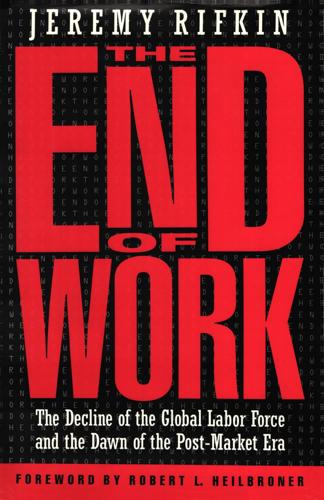
The End of Work
by
Jeremy Rifkin
Published 28 Dec 1994
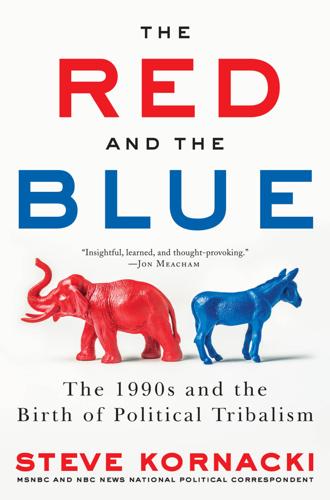
The Red and the Blue: The 1990s and the Birth of Political Tribalism
by
Steve Kornacki
Published 1 Oct 2018
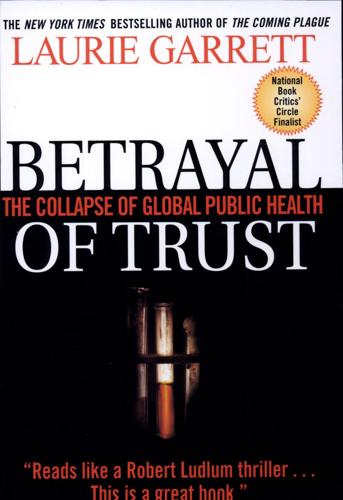
Betrayal of Trust: The Collapse of Global Public Health
by
Laurie Garrett
Published 15 Feb 2000